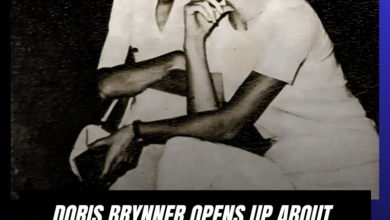Elton John Reveals the Deep Connection Between Marilyn Monroe’s Struggles and His Classic Hit
OPINION: This article may contain commentary which reflects the author's opinion.
Elton John’s “Candle in the Wind” is often regarded as one of his most poignant works, a song that transcends its original subject to explore the darker side of fame. Released in 1973 on the album Goodbye Yellow Brick Road, the track was famously inspired by Marilyn Monroe—a star whose luminous career was underscored by personal struggle and an untimely death.
Marilyn Monroe, born Norma Jeane Mortenson, emerged as the quintessential Hollywood icon. She was adored for her beauty, talent, and charm, becoming a symbol of the golden age of cinema. But behind her glamorous facade, Monroe wrestled with depression, anxiety, and substance abuse. Her personal life, including her turbulent marriage to Arthur Miller and the pressures of being constantly in the public eye, ultimately led to her seeking psychiatric help. Tragically, her story ended in 1962 at the age of 36, reinforcing the narrative of fame as a double-edged sword.
In “Candle in the Wind,” Elton John and his longtime lyricist Bernie Taupin pay tribute to Monroe’s complex legacy. The song opens with the line, “Goodbye Norma Jeane,” a direct nod to the name Monroe left behind as she was shaped into a Hollywood persona. While Taupin later downplayed his personal attachment to Monroe, explaining that the song could have been about any number of tragic cultural icons, the choice of Monroe was deliberate. She became the face of a cautionary tale about the price of fame—something both John and Taupin understood deeply.
Taupin once said, “It’s not that I didn’t have a respect for her. It’s just that the song could just as easily have been about James Dean or Jim Morrison, Kurt Cobain. I mean, it could have been about Sylvia Plath or Virginia Woolf.” What tied all these figures together was their tragic early deaths and the “frozen-in-time” image they left behind. For Monroe, it was the lasting impression of a woman who dazzled the world but was ultimately consumed by the pressures of celebrity.
Monroe’s influence on “Candle in the Wind” became even more poignant years later when the song was adapted to honor Princess Diana after her death in 1997. For Diana, as for Monroe, fame brought intense public adoration alongside relentless scrutiny. At Diana’s funeral, John performed a revised version of the song, changing the opening to “Goodbye England’s Rose.” This rendition struck a universal chord, becoming one of the best-selling singles in history.
While the 1997 version is perhaps more widely remembered, the original’s roots in Monroe’s life remind listeners of the song’s foundation: a reflection on how fame can both elevate and destroy. Elton John and Bernie Taupin crafted a timeless piece that, while starting with Monroe, speaks to the fragile humanity of all those caught in the spotlight.



